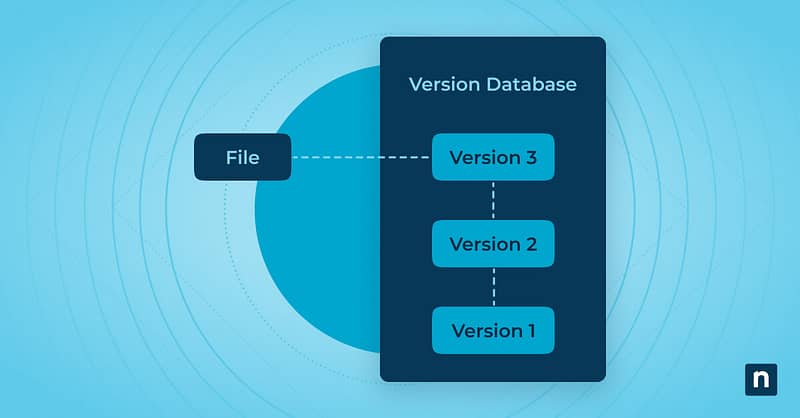Version control systems (VCS) are indispensable tools in the realm of software development, serving as the backbone for project management and collaboration. By enabling developers to track and manage changes to codebases, a good version control process not only boosts efficiency but can also significantly reduce the likelihood of conflicts between concurrent code changes, making it easier to integrate work from multiple developers smoothly – simultaneously enabling both more creative freedom and better security.
The journey of version control systems began with rudimentary setups like Source Code Control System (SCCS) and Concurrent Versions System (CVS), which introduced the concept of centralized version control.
However, it was the advent of Git, a distributed version control system, that revolutionized the landscape. Linux founder Linus Torvalds developed Git in 2005 with the primary purpose of creating a free and open-source distributed version control system that was specifically designed to handle the development of the Linux kernel.
This need arose from a desire for a system that could support distributed development in a scalable, efficient manner, following the withdrawal of the free version of BitKeeper, which had been used for Linux kernel development up until that point. Torvalds wanted a tool that emphasized speed, data integrity, and support for distributed, non-linear workflows. These requirements led to the creation of Git, which has since become one of the most widely used version control systems in the world.
Over the years, version control tools have evolved to meet the growing demands of modern software development. From the simplicity of SVN to the powerful branching and merging capabilities of Git, these tools have become integral to managing complex projects. They facilitate better code quality, enable agile development practices, and support continuous integration and deployment workflows, highlighting their critical role in today’s coding methodologies.
Understanding version control
Version control, also known as source control, is the practice of managing changes to source code. Version control systems track modifications, allowing developers to revert to previous states, compare changes, and merge updates from different sources. While often used interchangeably, “source control” emphasizes the management of source code changes, whereas “version control” can apply more broadly to any collection of changes over time.
Anatomy of a version control system
- Repositories: Central locations where code is stored and managed.
- Branches: Divergences in the development workflow to work on different features or versions simultaneously.
- Commits: Snapshots of changes made to the codebase, marking a specific point in the repository’s history.
- Merges: The process of integrating changes from different branches back into a single line of development.
Different types of version control systems
- Centralized Version Control Systems (CVCS): Systems like SVN, where all changes are stored on a central server.
- Distributed Version Control Systems (DVCS): Systems like Git and Mercurial, where each user has a complete copy of the repository, enhancing collaboration and redundancy.
Centralized systems, such as SVN, rely on a single server to store all versions of a project, simplifying administration but requiring network access for most operations. Distributed systems like Git allow every developer to have a full repository copy, enabling work offline and providing a robust framework for merging and branching.
Benefits of using version control in software development
- Collaborative efficiency: The benefits of implementing version control systems in software development are manifold, fundamentally transforming the way teams collaborate, manage code, and deliver projects. At its core, version control serves as the backbone of a streamlined development process, enabling team members to work on various aspects of a project in tandem. This simultaneous development, free from the risk of overlapping or conflicting changes, significantly boosts productivity and elevates the quality of the code produced.
- Historical insight: Moreover, version control acts as a meticulous record keeper, tracking every change made to the codebase. This tracking is not just about logging modifications – it’s about weaving a detailed narrative of the project’s evolution, offering insights into its progression, facilitating debugging, and anchoring accountability. Such a comprehensive history becomes an invaluable asset for teams looking to understand past decisions, rectify issues, or simply navigate through the development journey of a project.
- Transparency and accountability: Beyond tracking, version control systems usher in an era of unparalleled transparency and accountability in software development. They allow all stakeholders, from developers to project managers, to have a clear view of the project’s progress, review adjustments, and make decisions based on up-to-date information. This visibility ensures that everyone is aligned, informed, and engaged, fostering a collaborative environment where informed decisions are the norm.
- Risk mitigation: Risk mitigation is another critical benefit offered by version control. The nature of software development is such that changes are constant, and with change comes the risk of errors, conflicts, and data loss. Version control systems address these challenges head-on, managing modifications with precision to maintain a stable and reliable development environment. By safeguarding against potential pitfalls associated with updates and alterations, these systems ensure that the project’s integrity remains intact throughout its lifecycle.
- CI/CD enablement: In the realm of modern software practices, continuous integration (CI) and continuous deployment (CD) have become pivotal. Version control stands at the heart of CI/CD processes, automating the integration of code changes, facilitating thorough testing, and enabling swift deployment. This automation not only accelerates delivery times but also significantly enhances the quality of the software produced, making version control an indispensable tool for teams aspiring to implement CI/CD methodologies.
- Open-source trust: Lastly, the role of version control in fostering trust within the open-source community cannot be overstated. Open-source projects thrive on collaboration and contributions from developers worldwide. Version control systems provide a transparent framework for managing these contributions, tracking issues, and ensuring the codebase’s integrity and security. Such transparency is crucial in building trust among developers, businesses, and even institutions, thereby encouraging broader adoption and more robust collaboration within the open-source ecosystem.
Versioning software and tools
Versioning software plays a critical role in managing the lifecycle of software development projects. By keeping track of every change and facilitating collaboration, these tools help project managers, developers, and stakeholders maintain control over the development process, ensuring that projects are completed efficiently and effectively.
Top version control software
- Git: Renowned for its flexibility, speed, and distributed nature.
- SVN (Subversion): A popular centralized version control system.
- Mercurial: Similar to Git, it’s known for its ease of use and efficiency in handling large projects.
Key features to consider
- Branching and merging capabilities: These features allow teams to work on different features or fixes simultaneously without affecting the main codebase, streamlining the process of integrating changes back into the project.
- Support for distributed development: This facilitates collaboration among developers who are not collocated, enabling them to work independently on copies of the project and merge changes without the need for constant connectivity.
- Integration with development tools and CI/CD pipelines: Seamless integration enhances workflow efficiency by automating the build, test, and deploy processes, ensuring that new code changes are smoothly incorporated into the existing project.
- User access control and security features: Effective management of user permissions and robust security protocols are essential to protect the integrity of the codebase and control who can make changes to the project.
Implementing a version control system
Evaluating team needs and software compatibility
Before adopting a version control system, it’s crucial to evaluate your team’s specific needs, the size and complexity of your project, and the existing technical setup to ensure the chosen system complements your project’s objectives and fits seamlessly within your technical framework.
However, despite these considerations, Git often emerges as the preferred option for a wide range of scenarios, barring compelling reasons to opt for an alternative, such as the necessity to accommodate legacy systems.
Git’s widespread acceptance across both public and private sectors, coupled with its extensive support from the open-source community, typically positions it as the optimal choice for contemporary development projects. For smaller teams, leveraging a hosted Git solution like GitHub or Bitbucket can offer a cost-effective start.
Nevertheless, as your project scales, the economics of using these hosted services compared to the feasibility and cost-effectiveness of self-hosting GitLab on a budget-friendly Linux VPS might warrant a closer examination, given the potential for significant cost overlap at larger scales. The setup procedure for your chosen VCS differs not only by your chosen Linux distribution but also your VPS provider; many hosting providers’ “easy dashboard install” methods allow for one-click installations of eg. Gitlab.
Best practices
- Commit discipline: Regularly commit changes with meaningful messages.
- Structure integrity: Maintain a clean and organized repository structure.
- Strategic branching: Utilize branching and merging strategies to manage features and releases.
- Quality assurance: Review code before merging to ensure quality and consistency.
Common pitfalls and avoidance strategies
Overcomplicating branch structures
Creating too many branches for various features, bug fixes, or experiments can lead to a convoluted branch structure. This complexity makes it difficult to track changes and merge them efficiently, leading to potential conflicts and confusion.
Avoidance strategies
- Adopt a branching model: Implement a standardized branching model like Git Flow or GitHub Flow. These models provide a structured approach to creating and managing branches, making it easier to understand their purpose and lifespan.
- Branch pruning: Regularly review and delete branches that are no longer active or have been merged into the mainline. This practice keeps the repository clean and manageable.
Neglecting to merge changes promptly
Delaying the integration of branch changes into the mainline can result in merge conflicts, divergence from the mainline, and a painful merge process. It also hampers the visibility of work being done across the team.
Avoidance strategies
- Continuous Integration (CI): Implement CI practices to automate the testing and merging of branches. This encourages frequent merges and helps catch integration issues early.
- Regular merge intervals: Set regular intervals or milestones for merging branches back to the mainline. This reduces the complexity of merges and keeps the branch closely aligned with the mainline.
Inadequate documentation
Failing to document the purpose of branches, changes made, and the rationale behind those changes can lead to confusion, especially for new team members or when revisiting older parts of the project.
Avoidance strategies
- Commit message standards: Enforce a standard for commit messages that includes a brief description of the change and, if necessary, a reference to the task or issue it addresses. This provides context for each change.
- Project and branch documentation: Maintain a README file or a wiki for the project and individual branches, outlining their purposes, how they should be used, and any special considerations. This is especially important for long-lived branches.
- Code review process: Implement a code review process where changes are reviewed before merging. This not only ensures code quality but also serves as a form of documentation, where decisions and discussions about the changes are recorded.
By adopting these strategies, teams can mitigate common pitfalls associated with version control, leading to a more efficient and collaborative development process.
Other challenges
Challenges such as merge conflicts, managing large binaries, and ensuring security can be addressed by adopting merge strategies as mentioned, as well as using large file storage solutions, and implementing strong access controls and audit trails.
Version control: The unsung hero of modern software development
As we navigate the dynamic terrain of software development, the pivotal role of version control systems becomes increasingly clear. These systems are not merely tools for managing code – they are the cornerstone of modern software development, empowering teams to collaborate with unparalleled efficiency, safeguard project integrity, and foster innovation.
With the rapid evolution of technology, the adaptability provided by version control is indispensable, ensuring that developers and projects can thrive amid the shift towards decentralized development, AI-driven coding, and agile methodologies. Embracing version control is, therefore, not just an option but a necessity for those looking to lead in the creation of future-proof, high-quality software solutions.
Understand ‘Mastering Version Control Systems: A Complete Guide‘ even better by watching this brief video guide.








